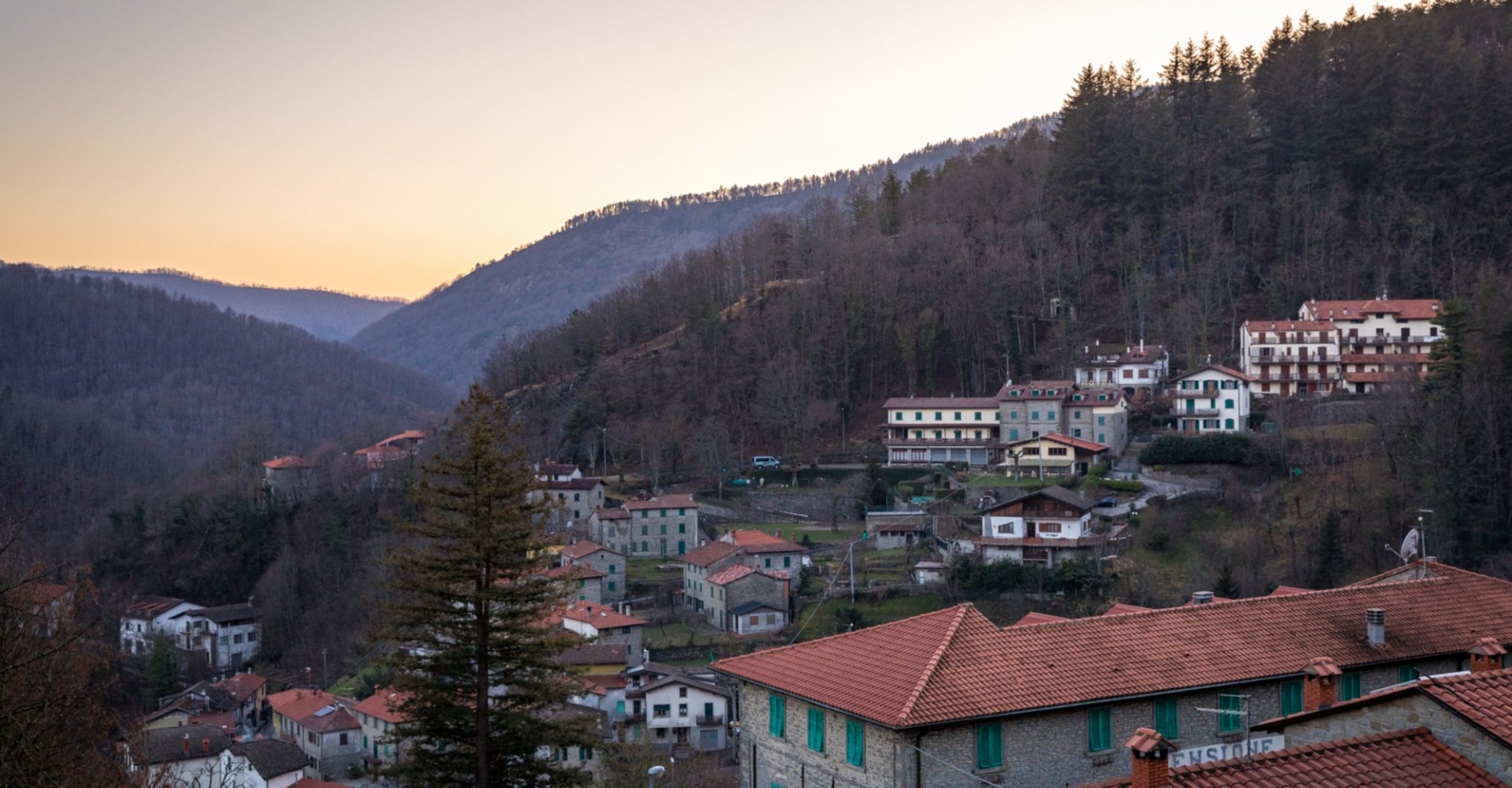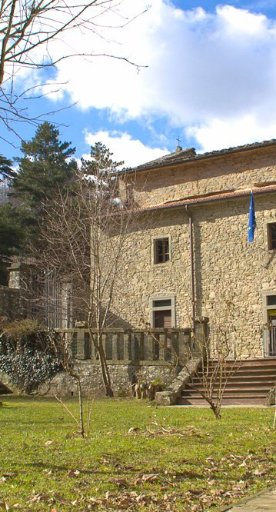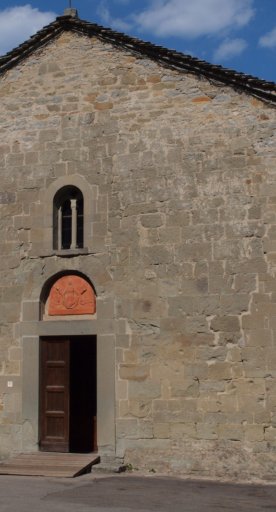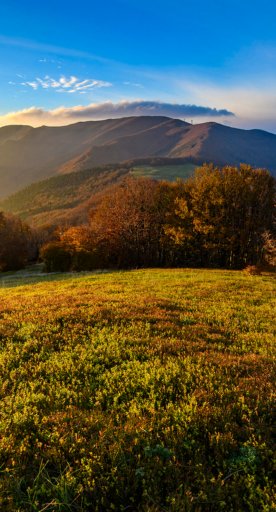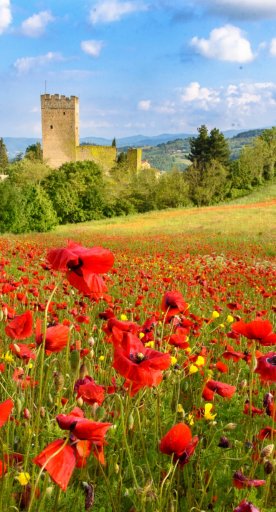Badia Prataglia
A small village immersed in the Casentinesi Forest Park Nature Reserve
Badia Prataglia is a small town located on the north-eastern edge of the Casentino valley, on the border between Tuscany and Romagna. Its territory falls entirely within the National Park of the Casentinesi Forests, Monte Falterona and Campigna. Its history has, until recently, been strongly influenced by the Patgliesi and Camaldolesi monks, and by the relationship they have gradually established with the forest that surrounds the village.
What to see in Badia Prataglia
Badia Prataglia has a particularly unique urban structure, made up of small inhabited centers called Castelletti that are scattered a short distance from each other amongst the chestnut and fir woods. Today, the Castelletti are connected to each other by a path, accompanied by descriptive panels bringing visitors closer to the area’s traditions, history and memories.
Explore the Parish Church of Santa Maria Assunta, the only remains of a monastery built in 986 and consecrated in 1008. The crypt dates to Roman times, as testified by some of the capitals. The baptismal font and the side altars date to 1630, while the present-day look of the church, with a single nave and a wooden trussed roof, comes from restorations that occurred in the 19th century.
There are two interesting places encompassing the world of trees and forests.
The Forestry Museum, dedicated to the Bohemian forest engineer Karl Siemon, was set up to administer the area’s forests by the Grand Duke of Tuscany Leopold II in 1837. Here, you’ll be able to discover everything about the Casentinesi Forests and the history of forestry work, alongside enlarged images of the Appenines’ flora and fauna, a model of the geology of the territory, reconstructions of natural environments and finds of Apennine mammals.
Next to the museum is the Arboreto Carlo Siemoni. Planted half way through the 19th century by Siemon, it’s the oldest arboretum in Italy, and was created as a site for the experimentation and acclimatisation of exotic and native forest species and of numerous centuries-old trees. The arboretum extends across 3 hectares and is home to 139 tree species from numerous moderate-climate countries. “Legendary” trees take up residence here, such as giant Californian sequoias and Cryptomeria, the holy Japanese tree whose prized wood is used to build Shinto temples.
Badia Prataglia has a particularly unique urban structure, made up of small inhabited centers called Castelletti that are scattered a short distance from each other amongst the chestnut and fir woods. Today, the Castelletti are connected to each other by a path, accompanied by descriptive panels bringing visitors closer to the area’s traditions, history and memories.
Explore the Parish Church of Santa Maria Assunta, the only remains of a monastery built in 986 and consecrated in 1008. The crypt dates to Roman times, as testified by some of the capitals. The baptismal font and the side altars date to 1630, while the present-day look of the church, with a single nave and a wooden trussed roof, comes from restorations that occurred in the 19th century.
There are two interesting places encompassing the world of trees and forests.
The Forestry Museum, dedicated to the Bohemian forest engineer Karl Siemon, was set up to administer the area’s forests by the Grand Duke of Tuscany Leopold II in 1837. Here, you’ll be able to discover everything about the Casentinesi Forests and the history of forestry work, alongside enlarged images of the Appenines’ flora and fauna, a model of the geology of the territory, reconstructions of natural environments and finds of Apennine mammals.
Next to the museum is the Arboreto Carlo Siemoni. Planted half way through the 19th century by Siemon, it’s the oldest arboretum in Italy, and was created as a site for the experimentation and acclimatisation of exotic and native forest species and of numerous centuries-old trees. The arboretum extends across 3 hectares and is home to 139 tree species from numerous moderate-climate countries. “Legendary” trees take up residence here, such as giant Californian sequoias and Cryptomeria, the holy Japanese tree whose prized wood is used to build Shinto temples.
Nearby
Visiting the Badia Prataglia area means exploring the Casentino territory and its Foreste Casentinesi National Park, one of the most untouched forests in all of Italy. The park stretches out over about 37,000 hectares and vaunts more than 600 kilometers of hiking trails, 20 mountain biking routes, 9 nature paths and 2 routes suitable for the blind and for those with mobility issues.
Make sure you stop by the Madonna di Lourdes Chapel in La Casina. The little chapel is also known as 'Grotta', as it is built behind a rock that forms its back wall. Built in 1939 by the priest Lorenzo Mondanelli, who was born in Badia Prataglia and had been a missionary in South America, the church was dedicated to the Madonna di Lourdes, since the priest was convinced that she had saved his life during an earthquake in Chile as well as during a fire aboard a ship.
From Badia Prataglia, you can explore numerous interesting and fascinating destinations, whether natural or historical, artistic or religious, such as the Camaldoli Monastery and the Santuario della Verna.
Visiting the Badia Prataglia area means exploring the Casentino territory and its Foreste Casentinesi National Park, one of the most untouched forests in all of Italy. The park stretches out over about 37,000 hectares and vaunts more than 600 kilometers of hiking trails, 20 mountain biking routes, 9 nature paths and 2 routes suitable for the blind and for those with mobility issues.
Make sure you stop by the Madonna di Lourdes Chapel in La Casina. The little chapel is also known as 'Grotta', as it is built behind a rock that forms its back wall. Built in 1939 by the priest Lorenzo Mondanelli, who was born in Badia Prataglia and had been a missionary in South America, the church was dedicated to the Madonna di Lourdes, since the priest was convinced that she had saved his life during an earthquake in Chile as well as during a fire aboard a ship.
From Badia Prataglia, you can explore numerous interesting and fascinating destinations, whether natural or historical, artistic or religious, such as the Camaldoli Monastery and the Santuario della Verna.
Events
Popular and religious rites, ancient traditions and the centuries-old relationship with the forest and woodworking are the basis of Badia Prataglia’s numerous folkloristic events.
Cenavecchia is one of the most important traditions: on the eve of Epiphany, the village’s children go from Castelletto to Castelletto, house to house, singing and dancing dressed as witches.
Those involved in Cantar Maggio also go from house to house, a ritual linked to the changing of the seasons and still very popular in some rural areas of Tuscany. During the night of April 30, the village’s young people, knock on doors in groups and sing traditional songs aimed at favouring a good season for the harvest, but also for love, receiving a "payment" in agricultural products as an exchange.
The Festa dei Fochi is celebrated on September 8 to commemorate the day when, in 1008, the bishop of Arezzo dedicated Badia Prataglia’s church to Santa Maria Assunta. A competition was founded between the Castelletti for the largest and longest-lasting fire. The locals would gather to sing around the winner on the evening of September 7. Over the years, the festival has changed and is now celebrated with a single large fire (for safety reasons) in Badia Prataglia’s central square.
The Mangialonga is also unmissable: a well-known gastronomic walk among the Castelletti, during which the typical dishes of the area are up for tasting while enjoying the forest air and nature’s enchantment. The event usually takes place on the first or second Saturday of August.
Popular and religious rites, ancient traditions and the centuries-old relationship with the forest and woodworking are the basis of Badia Prataglia’s numerous folkloristic events.
Cenavecchia is one of the most important traditions: on the eve of Epiphany, the village’s children go from Castelletto to Castelletto, house to house, singing and dancing dressed as witches.
Those involved in Cantar Maggio also go from house to house, a ritual linked to the changing of the seasons and still very popular in some rural areas of Tuscany. During the night of April 30, the village’s young people, knock on doors in groups and sing traditional songs aimed at favouring a good season for the harvest, but also for love, receiving a "payment" in agricultural products as an exchange.
The Festa dei Fochi is celebrated on September 8 to commemorate the day when, in 1008, the bishop of Arezzo dedicated Badia Prataglia’s church to Santa Maria Assunta. A competition was founded between the Castelletti for the largest and longest-lasting fire. The locals would gather to sing around the winner on the evening of September 7. Over the years, the festival has changed and is now celebrated with a single large fire (for safety reasons) in Badia Prataglia’s central square.
The Mangialonga is also unmissable: a well-known gastronomic walk among the Castelletti, during which the typical dishes of the area are up for tasting while enjoying the forest air and nature’s enchantment. The event usually takes place on the first or second Saturday of August.
Typical products and dishes
For centuries, the timber from the surrounding forests has been the basis of Badia Prataglia's work and craftsmanship, producing traditional artists who work with the material. This history and bond are also found in typical dishes, such as acquacotta alla tagliatora, a simple but powerful dish based on stale Tuscan bread, vegetables, tomatoes, garlic and onions, which wood cutters traditionally ate.
Right at the heart of the local cuisine – which is also influenced by its proximity to the Romagna border - are products from the forest, such as mushrooms, chestnuts, truffles, and from pig and sheep breeding. For example, the chestnuts that surround Badia Prataglia can be consumed in many different ways: fresh, roasted, boiled, dried or ground to obtain a sweet flour, a basic ingredient for many dishes.
For centuries, the timber from the surrounding forests has been the basis of Badia Prataglia's work and craftsmanship, producing traditional artists who work with the material. This history and bond are also found in typical dishes, such as acquacotta alla tagliatora, a simple but powerful dish based on stale Tuscan bread, vegetables, tomatoes, garlic and onions, which wood cutters traditionally ate.
Right at the heart of the local cuisine – which is also influenced by its proximity to the Romagna border - are products from the forest, such as mushrooms, chestnuts, truffles, and from pig and sheep breeding. For example, the chestnuts that surround Badia Prataglia can be consumed in many different ways: fresh, roasted, boiled, dried or ground to obtain a sweet flour, a basic ingredient for many dishes.
